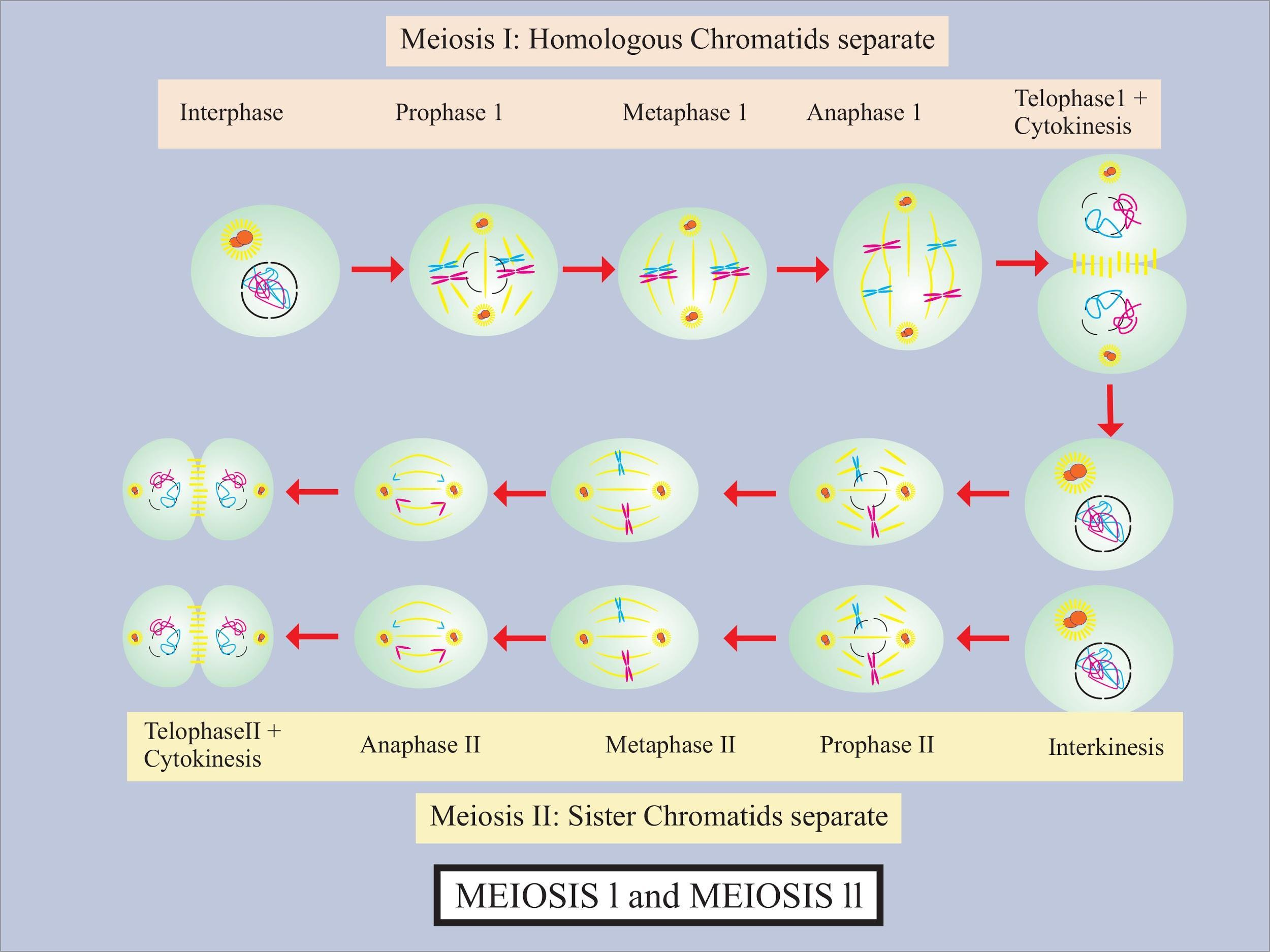Question
Question: Arrange the following events in the correct sequence of their occurrence during meiosis (a) Format...
Arrange the following events in the correct sequence of their occurrence during meiosis
(a) Formation of recombination nodule
(b) Reduction in the number of chromosomes
(c) Alignment of univalent at the equator
(d) Terminalisation of Chiasmata
(A) a b, d, and c
(B) a, d, b, and c
(C) a, c, b, and d
(D) c, d, b and a
Solution
Sexual reproduction is the production of haploid cells and the fusion of two of those cells to form a diploid cell. The number of chromosomes in a diploid cell must decrease by half before sexual reproduction can occur. It generates cells with half the number of chromosomes as the original cell.
Complete step by step answer:
There are different events of meiosis:
- Crossing over occurs between non- sister chromatids of homologous chromosomes during the pachytene stage of prophase I in which segments are exchanged and a recombination nodule is formed.
- In chiasma formation, the crossing over results in the formation of an X shaped structure, during the diplotene stage of prophase I.
- The terminalisation of chiasma occurs during the diplotene stage of Prophase. The homologous chromosomes separate from one another except for in the spot of the traverse.
- The chromosomes align at the equatorial plate during metaphase which they get pulled apart during anaphase.
- The cell undergoes cytokinesis and divides into two cells each having half the number of chromosomes as the parent cell.
Every cell at that point goes through meiosis II which is like mitosis and all things considered, individual chromosomes get aligned at the equatorial plate which is then pulled in inverse direction by the spindle fibers. This outcome in the parting of chromosomes into sister chromatids.

So the right answer is ‘a, d, b, and c’.
Additional information:
Meiosis I:
- Meiosis has gone before by an interphase which comprises the G1 stage (growth), the S stage ( DNA replication), and the G2 stage.
- The homologous chromosomes condense and become visible as the x shape we know, pair up to form a tetrad, and exchange genetic material by crossing over during prophase I,.
- Microtubules attach at the chromosomes’ kinetochores and the nuclear envelope breaks down during prometaphase I
- During metaphase I, the tetrads line themselves up at the metaphase plate and homologous pairs orient themselves randomly
- Centromeres break down and homologous chromosomes separate in anaphase I.
- Chromosomes move to opposite poles; during cytokinesis, the cell separates into two haploid cells In telophase I.
Meiosis II
- Chromosomes condense again, centrosomes that were duplicated during interphase I move away from each other toward opposite poles, and new spindles are formed during prophase II,.
- The nuclear envelopes are completely broken down, and each sister chromatid forms an individual kinetochore that attaches to microtubules from opposite poles during prometaphase II.
- Sister chromatids are condensed and aligned at the equator of the cell during metaphase II,.
- During anaphase II, the sister chromatids are pulled separated by the kinetochore microtubules and move toward opposite poles
- Chromosomes arrive at opposite poles and begin to decondense; the two cells divide into four unique haploid cells during telophase II and cytokinesis.
Note: During meiosis, I, when the homologous chromosomes separate and move to opposite poles then the ploidy level is reduced from two to one, which is referred to as a reduction division. Meiosis II and mitosis are not the reduction divisions like meiosis I because the number of chromosomes always remains the same; that way, meiosis II is referred to as equatorial division.
